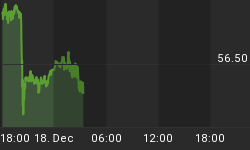Below is an extract from a commentary originally posted at www.speculative-investor.com on 3rd February 2008.
From our perspective and the perspectives of many other observers of the gold sector, the generally lacklustre performance of most gold shares over the past 6 months in the face of a relentless advance in the gold price certainly qualifies as unexpected. The inability of the average exploration-stage gold stock to sustain any gain whatsoever has been especially remarkable, but it is important to understand that the under-performance issue is not confined to the smallest stocks. For example, we noted in last week's Interim Update that only one of the largest six gold stocks has exceeded its May-2006 peak, despite the fact that the gold price has tacked on around $200 since that time.
Exploration-stage stocks, as a group, are always the last stocks to move during an intermediate-term rally. When they move they REALLY move, to the extent that they regularly end up yielding much greater trough-to-peak gains then their larger-cap brethren. The salient point, though, is that they can't reasonably be expected to take off until after the large and mid-tier stocks have caught on fire. The problem, at the moment, is that with only a handful of exceptions the stocks of the large and mid-tier producers have NOT caught on fire.
The aforementioned problem has been masked by widely followed gold-stock indices such as the HUI and the XAU, because over the past several months these indices have been poor proxies for the overall gold sector. It does become evident, however, when we look at a broader-based gold stock index such as the Global Gold Index (GGI) provided by Nick Laird at www.sharelynx.com (an excellent subscription-based web site, by the way, because it contains many useful charts that cannot be found anywhere else). Nick compiles the GGI by averaging the HUI, the XAU, the Australian Gold Index (an equally-weighted index of 20 Australian gold producers), the Canadian Gold Index (an equally-weighted index of 18 Canadian gold producers), and the South African Gold Index (based on the old Johannesburg Gold Index).
The following chart of the GGI shows that the gold sector, as a whole, has not yet traded above its May-2006 peak and is presently about 13% below its May-2006 peak. In other words, it shows that the average gold stock is still mired within the consolidation that commenced in May of 2006. This, in turn, means that the jury is still out as to whether the gold sector of the stock market embarked on a new major upward leg during the third quarter of last year.
For comparative purposes, immediately below the chart of the GGI we've included a chart of the HUI covering the same time period.


After comparing the performances of gold bullion, the GGI and the HUI, we arrived at these conclusions:
1. If the HUI had done a good job of representing the performance of the average gold stock then it would now be trading in the 350s rather than the 450s.
2. The components of the HUI are, on average, about 30% over-valued relative to the average gold stock.
3. Right now, the risk/reward ratios of popular gold-stock indices such as the HUI are considerably worse than the risk/reward ratio of the average gold stock.
4. Relative to gold bullion, the average gold stock is presently as cheap as it was at the May-2005 bottom.
5. The average gold stock currently has a lot more upside potential than gold bullion.
6. There will be some doubt that a major new upward leg is underway until a broad-based gold-stock index such as the GGI moves to a new all-time high. In the mean time it might be unreasonable to expect exploration-stage gold stocks, as a group, to make much headway. However, due to depressed valuations and the likelihood that the financial backdrop will remain 'gold bullish' for the foreseeable future, the intermediate-term risk/reward for the speculative end of the gold universe has never been better.















